
The Fourth of July, with all its firework glory, is just around the corner. Everyone wants to capture those memorable moments with the bright lights on film. However, most firework photos leave something to be desired in the depiction of the experience. Here are some ways you can get those accurate and larger-than-life epic firework photos you want.
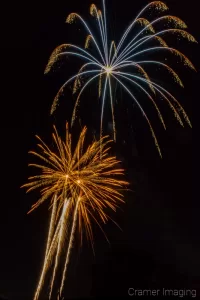
When I first got into photography, I remember wanting to get some of those epic firework photos when the Fourth of July came around. Knowing I had no clue how, I decided to research out how to get the kinds of firework photos I wanted. I found a few books and several good websites to give me some tutorials.
The first thing I came to realize is that fireworks are multiple second to even multiple minute experiences. We can see the entire explosion of color with our eyes, from start to finish. However, the camera does not match the eye for this kind of photography. If we want epic firework photos, we must adjust the camera.
Camera shutters are only open for fractions of a second. This far smaller time interval is the reason that most firework photos don’t work out as hoped. The camera only sees a tiny portion of the entire experience. It records what it sees but it doesn’t see the entire time interval.
This is one of the points which you must address in order to take epic firework photos. Fortunately, there are some simple and easy ways to handle this. Then you won’t end up with firework photos looking like these.
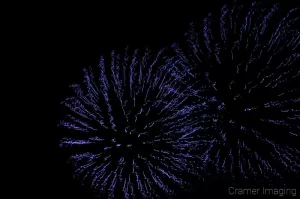
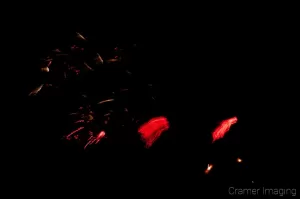
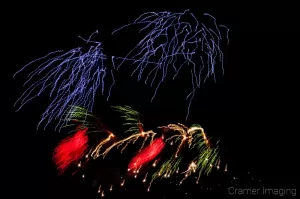

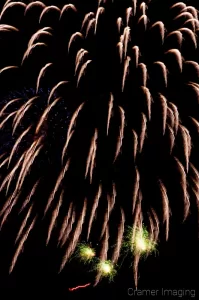
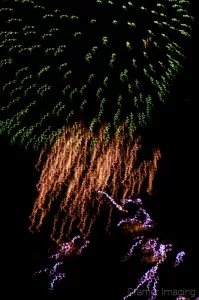
So, let’s discuss what you need to do to avoid making all your firework photos look like these.
Now that you know what you need, let’s break it down further.
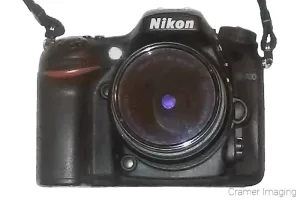
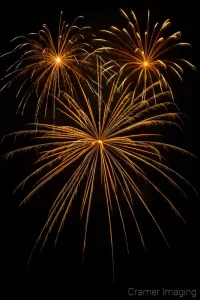
The average consumer level digital camera (or smart phone) won’t allow you to manipulate the length of the shutter speed. Or if it does, it won’t allow you to manipulate enough. This means that you must have a minimum of an entry level DSLR camera in order to attempt this kind of photograph.
In order to take sharp photos, you must also use a tripod. Multi second exposures are guaranteed to blur due to camera shake and your own motion. Also turn off any vibration reduction as it will add vibration to your photos making your fireworks look like squiggles.
You’ll also need a cable release so that your hand does not shake the camera as you trigger the shutter. I’ve made that mistake before and added motion blur in what was otherwise a tack sharp photo.
The telephoto lens will allow you to get in close to the big fireworks for more dramatic and epic shots. After all, firework photos are much more epic when they fill the frame.
In order to make this work, you will need to set your camera up on your tripod. Make sure that your cable release is also connected in properly.
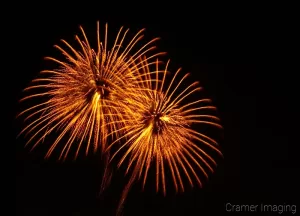
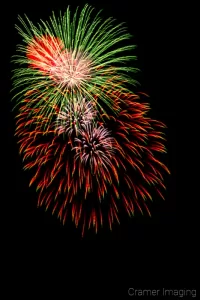
You will need to set your camera up with Manual Mode. Then set the shutter speed to about 5 seconds or longer. Alternatively, you may choose to set your shutter on Bulb Mode (you’ll find this setting by scrolling out to the end of the long shutter speed lengths).
Bulb Mode gives you the power to decide how long you want the shutter to be open without using a preset time. You simply push and hold the button down for the time you want to expose with. When you release, the shutter will close. Since you’ll probably use a cable with bulb mode, don’t trigger the button hold accidentally. Extra long firework exposures look terrible.
Set your ISO on the lowest setting that you can (200 for most Nikons, 100 for most Canons) so that you don’t over expose the image and so that you don’t end up with lots of digital noise either. (Newer model cameras are less noisy than older models are)
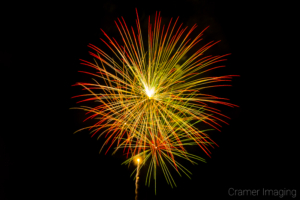
Thanks to varying light conditions at each fireworks show location, you will need to decide what the best aperture setting for your camera will be. I generally go with a mid-range f-stop number, such as f/8, thanks to the locations where I shoot firework photos. You might have more light pollution to deal with and might want to stop down more. Take a few test shots to double check your exposure. Make adjustments if necessary.
Finally, you will need to learn how to anticipate when the fireworks will explode so that you can capture the entire burst in your shot. You will only achieve this anticipation through trial and error. After a few attempts, you’ll begin to get the idea.
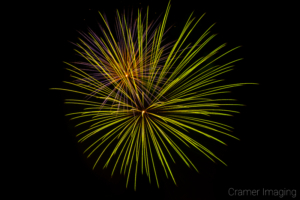
While most photos won’t land properly, even with this practiced technique, you’ll capture many more firework photos perfectly. In fact they may even resemble some of these.
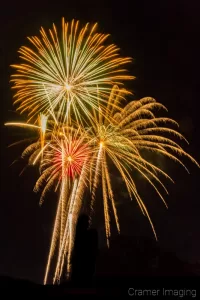

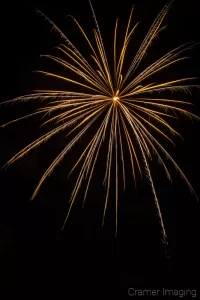
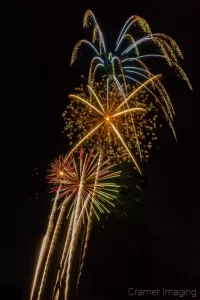
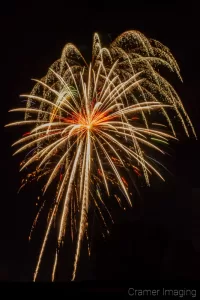
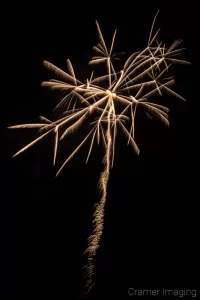
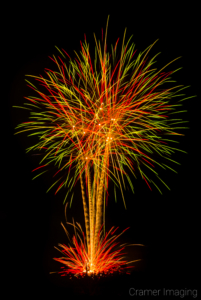
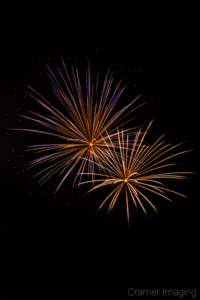

The best firework shots occur towards the beginning of a show, no matter what size of show. is for the simple reason that there will be an accumulation of smoke in the air obscuring the fireworks if you wait for later. The fireworks will light up and highlight the smoke in areas you may not wish to have illuminated. I’ve tried some of those shots before and come away very disappointed.
I’ve also learned that multiple bursts in one shot can be just as interesting as single firework bursts. Capturing them is more luck than anything else. But still, give that a try if you’d like.
An interesting foreground can add something to wide angle firework shots. Make sure that the foreground is properly lit as the silhouette of something exposed through the long shutter time might not be epic enough. Choose your foreground wisely.
Above all, make sure that you have a happy and safe Fourth of July this year.


Receive monthly updates in your inbox from us.

Join our email-only photo of the week club to get the full stories behind how we captured our favorite fine art landscape photos.
We respect your privacy
No More Results